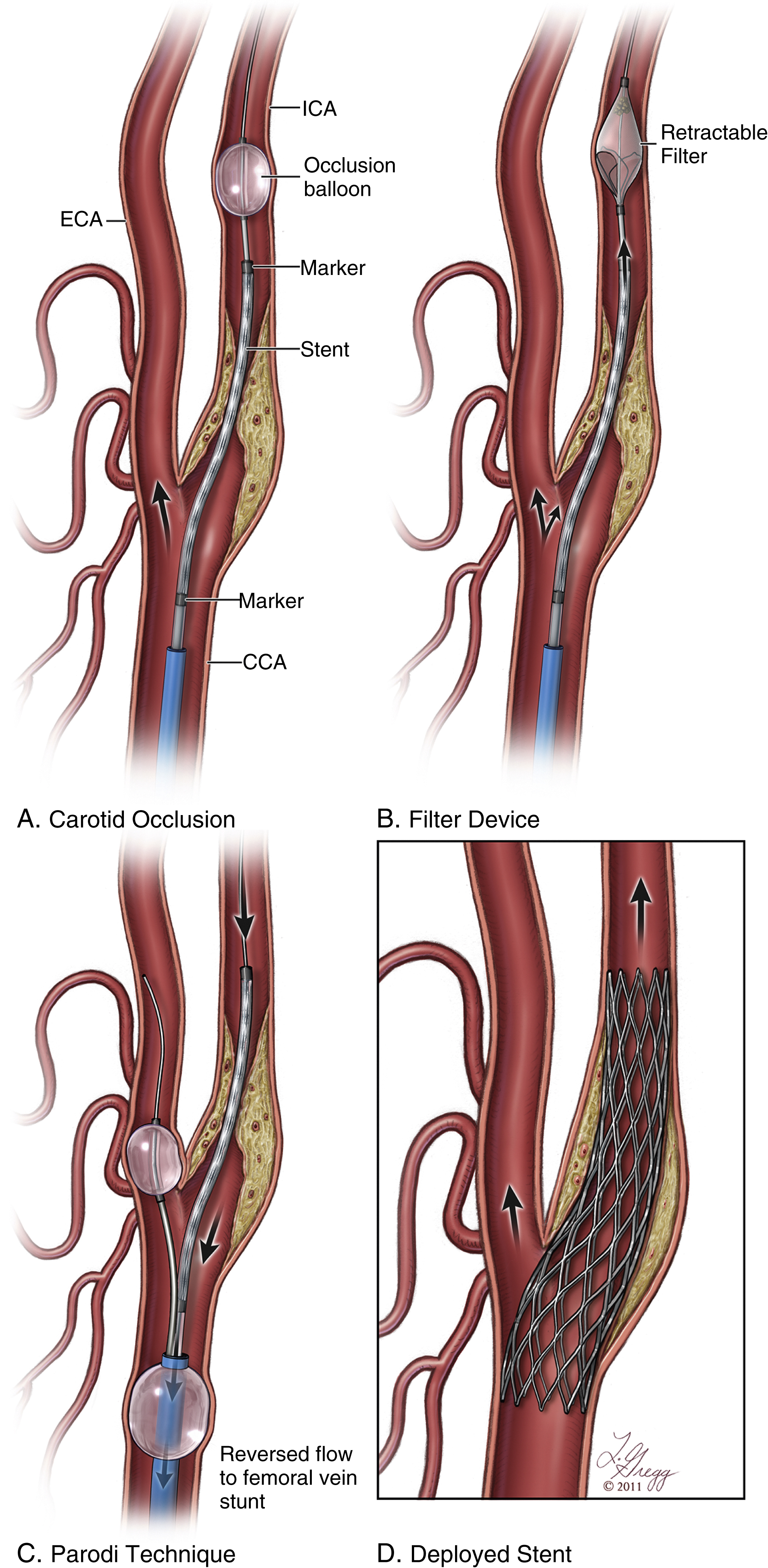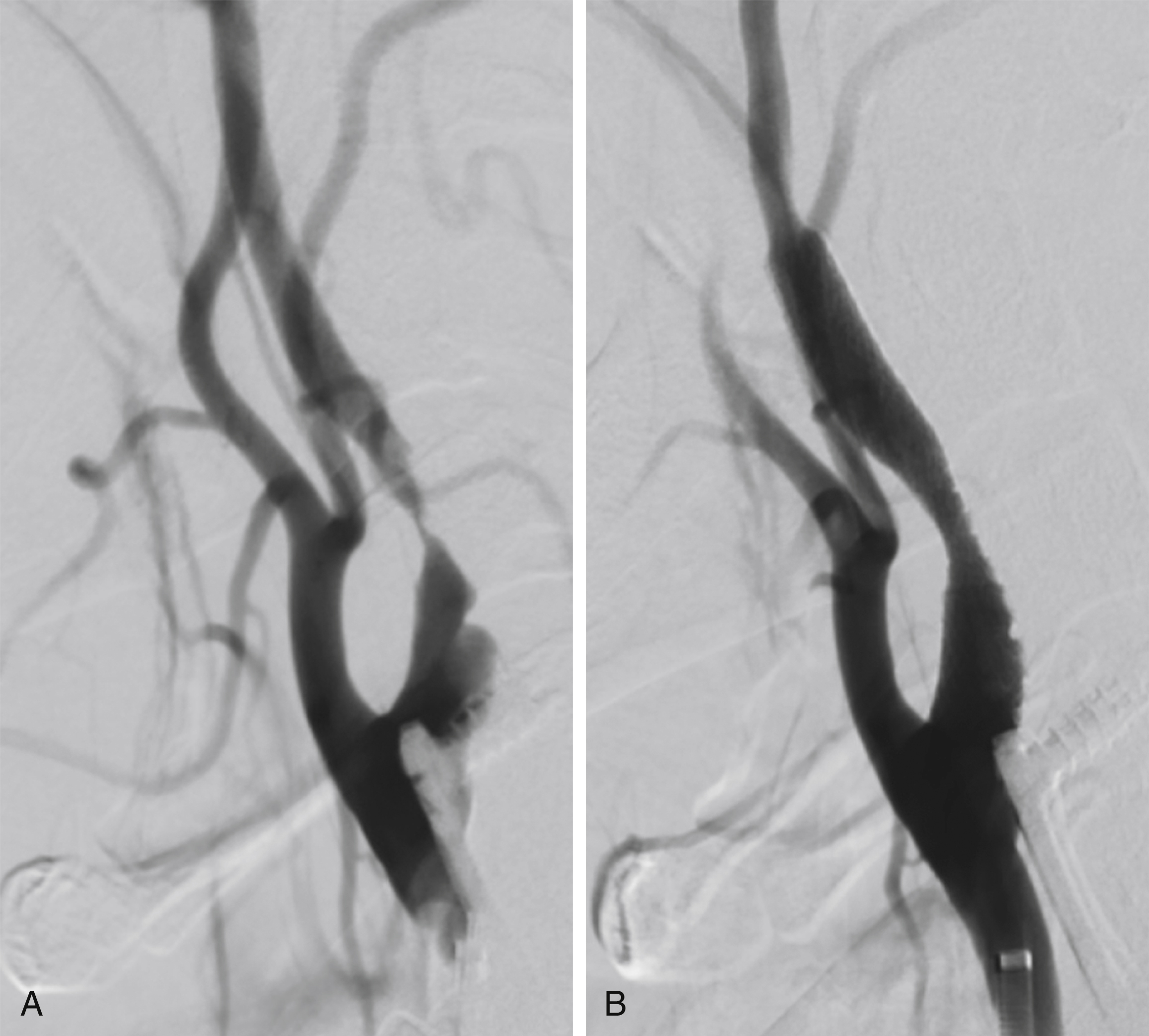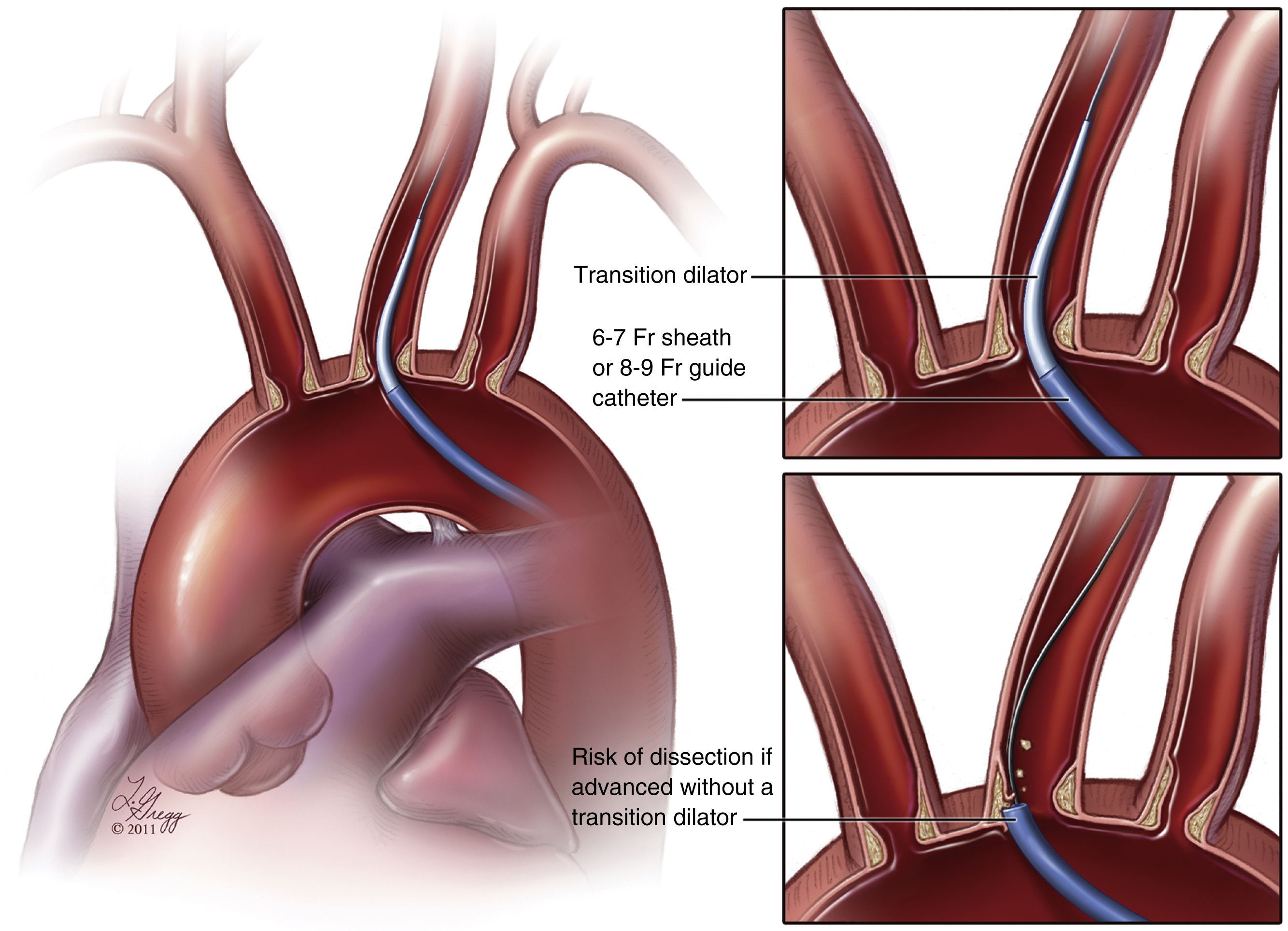Physical Address
304 North Cardinal St.
Dorchester Center, MA 02124
Stroke represents the fifth leading cause of death in the United States, with an incidence of 1.5 deaths per thousand people. Of the more than half-million strokes occurring annually, occlusive disease of the extracranial circulation is responsible for approximately 30%. Projections show that by 2030, an additional 3.4 million United States adults aged 18 years or older will have had a stroke, a 20.5% increase in prevalence from 2012. The traditional standard of care in treating cervical carotid artery occlusive disease has been carotid endarterectomy (CEA), a procedure initially performed in the 1950s and described by Scott, DeBakey, and Cooley. In 1988, the landmark North American Symptomatic Carotid Endarterectomy Trial demonstrated a reduction in stroke and death rates from 26% at 2 years to 9% after endarterectomy. Since that time, accumulating evidence has shown that carotid artery stenting (CAS) provides comparable long-term outcomes for patients with both symptomatic and asymptomatic carotid disease.
From a historical standpoint, Mathias, Theron, and Kachel pioneered angioplasty for cervical carotid artery occlusive disease treatment in the early 1980s. With the advent of stent technology, interventional management of carotid artery disease began to develop as a practical technique, as shown by the early work of Diethrich, Roubin, Wholey, and Mathias. Stents provided significant improvements over conventional angioplasty and helped reduce restenosis rates, prevent elastic recoil, and treat dissections. During the pioneering stage of carotid stent placement from 1995 to 1999, especially in the United States, there were primarily only two peripheral stent systems available: the balloon-mounted Palmaz stent (Cordis Corp., Miami Lakes, FL) and the Wallstent (Boston Scientific, Natick, MA). When Nitinol stents became available in 1999 in the United States, many operators had changed or were in the process of changing from balloon-mounted stents to either self-expanding Wallstents or the newer Nitinol stents. With rapid technologic advancements in both the stents themselves and distal protection devices, indications for this procedure and its overall application have grown significantly worldwide.
Local periprocedural risks of stroke and death should be taken into account when making any treatment decisions regarding carotid revascularization. Carotid revascularization is generally recommended for symptomatic patients with a high-grade stenosis (70%–99%) with a life expectancy of at least 5 years. Decisions regarding CEA versus CAS depend on local protocol. Certain patients are preferentially treated with CAS. These include patients who have surgically inaccessible lesions (e.g., a so-called high bifurcation), significant cardiac, pulmonary, or other systemic disease that would make the patient a high risk for general anesthesia, or other anatomical factors, e.g., radiation-induced stenosis. Other patient groups (e.g., symptomatic patients with 50%–70% stenosis) are approached on a case-by-case basis. All patients should undergo discussion in a multidisciplinary fashion with both the treatment team and the vascular neurologist involved. For asymptomatic patients the evidence is less clear, although treatment strategies taking into account such factors as plaque morphology are emerging.
Currently there are no absolute contraindications for CAS. Relative contraindications to the use of CAS can be divided into anatomical and patient-specific factors. Anatomical factors should be considered, and patients with type II and type III arches are certainly more difficult to treat. Tortuosity of both internal (ICA) and external carotid arteries are also relevant. The aortic arch is the “Achilles heel” for carotid stenting, and if the angiographer has difficulty accessing the vessel of interest, with extensive manipulation of the aorta and multiple catheter exchanges, it is best to abandon the procedure and consider alternative methods of treatment. However, advances in guide catheters and stent delivery systems have made this less of an issue, as has the use of alternative access routes (e.g., radial approach). Newer devices allow stent delivery via a direct carotid approach (e.g., the Enroute System, Silk Road Medical, Sunnyvale, CA).
Patients with impaired renal function (as measured by an estimated glomerular filtration rate <60 mL/min/1.73m 2 ) have a higher risk of developing contrast-induced nephropathy, although emerging evidence is showing that the risks of contrast-induced nephropathy are probably less than previously thought. These patients can generally be managed by the use of preprocedural fluids, the judicious use of contrast, avoidance of nephrotoxic medications ( e.g., nonsteroidal antiinflammatory drugs) and close collaboration with a nephrologist if required.
Additional relative contraindications include:
Evolving stroke
Intolerance/resistance to aspirin and/or clopidogrel
Patient with active bleeding diathesis or absolute contraindication to anticoagulation
Severe dementia
Uncontrolled hypertension
Aspirin and clopidogrel is the most common dual platelet therapy in use today. Resistance to antiplatelet agents is not uncommon and can result in in-stent restenosis or thrombosis. Resistance can be assessed by platelet aggregometry, although whether this is necessary remains controversial. Regarding clopidogrel, some studies have shown that greater than 50% of patients undergoing cerebrovascular stent placement might be low responders, and 0%–44% may be resistors, which can be related to genetic polymorphisms of cytochrome P450 3A4 and the P2Y12 receptor. Alternatives are available for low responders/resistors and include increasing the clopidogrel dose, ticlopidine, prasugrel, or ticagrelor. Resistance to aspirin is far less common, occurring in approximately 5% of patients undergoing cerebrovascular stent placement.
Endovascular treatment of carotid arterial stenosis was originally performed with equipment that was not specifically designed for this purpose. This initially led to significant complications in the form of periprocedural strokes. The introduction of balloon and stenting systems specifically designed for carotid stenting, along with the introduction of embolic protection devices (EPDs) and greater operator experience, has resulted in a steady decrease in periprocedural stokes.
Endovascular stents come in two designs: balloon-expandable and self-expanding. Balloon-expandable stents, while appropriate for ostial lesions at the aortic arch, should not be used for treatment of cervical carotid arterial lesions because of their lack of flexibility or ability to spontaneously reexpand after external compression. Self-expanding stents have essentially two designs: open cell and closed cell. Each design has certain advantages and disadvantages. The open-cell design has more flexibility, which allows for better vessel wall apposition and better deliverability through tortuous anatomy. However, open-cell designs have lower radial force, which may result in a weaker scaffold and thus compromise stent expansion due to recoil, especially in heavily calcified lesions. Closed-cell stent designs have more radial force, but they are less flexible and can introduce kinks and stenosis in the blood vessel when used in tortuous anatomy. Data from the Stent-Protected Angioplasty versus Carotid Endarterectomy trial suggest that there is a higher rate of embolic complications with open-cell designs (11%) than with closed-cell carotid stents (5.6%, P =.029).
Several studies have been performed to assess the outcome of incomplete stent apposition; many of these involve intracranial and coronary stenting. With respect to carotid stenting, the Wallstent can at times have incomplete apposition at the edges of the stent when deployed across tortuous segments of the ICA.
There are a number of stents available worldwide; those currently available in the United States include:
Rx Acculink (Abbott Laboratories, Abbott Park, IL)
Xact (Abbott)
NexStent (Boston Scientific)
Precise (Cordis)
ADAPT (Stryker Corp., Kalamazoo, MI)
Zilver (Cook Medical, Bloomington, IN)
There are two types of EPDs: (1) those that provide protection distal to the treatment site by blocking flow or filtering flow in the ICA distal to the treatment site, and (2) flow-reversal devices, which occlude inflow to the common carotid artery and external carotid artery causing reversal of flow in the ICA ( Fig. 60.1 ). It should be noted that the use of EPDs is not universal. Whereas some centers use EPDs for every carotid stenting case, others tailor the decision to the type of carotid plaque based on the preprocedural imaging, and still others do not routinely use EPDs. In the United States the use of EPDs is required if possible.

Devices that provide occlusion distal to the treatment site may consist of a balloon or, more commonly, a filter attached to a wire. The balloon occlusion concept originally pioneered by Theron has been refined. A balloon is attached to the working wire and advanced distal to the stenosis and inflated (GuardWire [Medtronic, Minneapolis, MN]). After stenting and angioplasty are completed, a catheter is then advanced and used to aspirate debris before deflating and recovering the balloon. Disadvantages of the balloon system include occluding antegrade blood flow during the procedure. Up to 30% of patients will not tolerate occlusion of the carotid artery. In addition, the angiographer cannot evaluate the lesion fluoroscopically while the balloon is inflated in the ICA. There is also a risk of flushing embolic debris retrograde into the common carotid and aorta or into collateral vessels off the external carotid artery, such as the middle meningeal and orbital branches.
With filter-type devices, the filter is attached to the working wire and deployed distal to the stenosis. After the procedure it is recovered, bringing the debris with filter. There are many different filter devices and they are paired with their individual stent platforms; they should not be mixed. The advantage to this type of design is that antegrade flow is maintained unless the filter is full of debris. Currently available devices include:
ANGIOGUARD (Cordis)
Accunet (Abbott)
Emboshield (Abbott)
Boston Scientific Filter Wire EZ (Boston Scientific)
MedNova-NeuroShield (Abbott)
Rubicon (Boston Scientific)
SpideRX (ev3/Covidien, Minneapolis, MN)
An operator should become familiar with one or two systems.
Currently the most commonly used flow-reversal device is the Mo.Ma (Medtronic, Minneapolis, MN), which is based on the Parodi design. With a flow-reversal device, a balloon is inflated in the external carotid artery. A second balloon attached to the guiding catheter is inflated in the common carotid artery. Retrograde flow is then created by aspiration or creation of a circuit between the guiding catheter and the venous system to create retrograde flow. Advantages of the proximal occlusion technique include the ability to provide protection in hostile lesions that could not accept conventional distal embolic filters, the fact that the stenotic lesion is not crossed with any wire or device without protection, as well as the potential to provide therapy in stroke management. Disadvantages include the large size of the guiding catheter (10F–11F), the associated blood loss if a venous connection system is not used, and the presence of low-lying superior thyroid arteries that at times can make it difficult to occlude with the balloon system. As noted previously, only those patients with sufficient collateral flow via the circle of Willis will be able to tolerate occlusion of antegrade carotid arterial flow, so this device will not be applicable to all patients.
CAS is conceptually straightforward. Before treatment, patients should have a complete neurologic examination, preferably by a neurologist, as well as appropriate premedication with dual antiplatelet therapy. Preprocedural imaging with computed tomographic (CT) angiography or magnetic resonance angiography can provide important information on the type of aortic arch, any anatomical variation that can affect the procedure, as well as important information about clot morphology, which can affect device and filter choice.
Once baseline images are obtained ( Fig. 60.2A ), measurements made, and the appropriate equipment selected, heparin should be administered at an initial dose of 70–100 IU/kg of body weight to achieve an activated clotting time of 250–300 seconds. A guiding catheter or a long flexible sheath large enough to support the stent deployment system (6F–7F sheath or 8F–9F guide catheter) is advanced into the common carotid artery over a 0.035-inch guidewire. Avoid excessive manipulation of these catheters within the aortic arch, because this is likely to increase the risk of embolic stroke ( Fig. 60.3 ).


The stenosis is crossed with a guidewire (0.018 inch or 0.014 inch) and if the operator has chosen to use one, an EPD deployed. (If a proximal-control–type EPD is being used this will be deployed before crossing the lesion). The safest way to perform this is under roadmap guidance. An angioplasty may be performed before stent deployment at the operator’s discretion. A self-expanding stent is then deployed across the stenosis. A follow-up angiogram is performed, and if the stent is adequately expanded, the EPD can be recovered ( Fig. 60.2B ). If not, angioplasty is performed followed by recovery of the EPD. A final intracranial angiogram is mandatory to ensure that there are no distal emboli as a result of the procedure.
Poststenting angioplasty postdilation is at the operator’s discretion. It is important to remember that most embolic events occur during postdilation. If there is good flow with less than 30% residual stenosis, the stent should be allowed to continue to expand on its own, without the additional risk associated with postdilation.
Become a Clinical Tree membership for Full access and enjoy Unlimited articles
If you are a member. Log in here